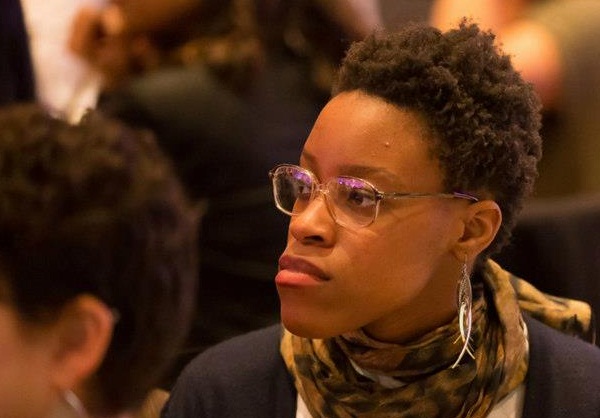This Friday, the YWCA’s Stand Against Racism annual event will bring together hundreds of thousands of people across the nation, from all walks of life, to call attention to the legacy of discrimination and raise awareness that racism still exists. In the four days leading up to the Stand Against Racism, Firesteel is examining how discrimination and institutional racism can block violence survivors from accessing housing services and other resources.
This series is co-authored by YWCA Seattle | King | Snohomish’s GirlsFirst and Volunteer Services Coordinator Nanyonjo Mukungu, and YWCA Walla Walla‘s Communications Coordinator Sara Rasmussen, who have been friends since college. This week, Nanyonjo and Sara join together with Firesteel to consider how discrimination affects different members of their communities in Seattle and Walla Walla. We invite you to do the same, and to join the YWCA in taking a Stand Against Racism this Friday, April 26.
Written by Nanyonjo Mukungu, GirlsFirst and Volunteer Services Coordinator, YWCA Seattle I King I Snohomish
INCITE! Women Of Color Against Violence defines violence against women of color as “a combination of violence directed at communities, such as police violence, war, and colonialism, and violence within communities, such as rape and domestic violence.”
In the first post in this series, Sara highlighted the failures of providing a one-size-fits-all approach to addressing domestic and sexual violence. In this second post, I share the intersections between my own personal story, the Violence Against Women Act (VAWA), and the criminal justice system. I share my story to break the silence around domestic and sexual violence and to combat the invisibility of the experiences of survivors of color.
Oppression experienced by communities of color is shaped by race, class, gender, sexual orientation, gender identity, citizenship, age, and ability. In order to adequately address domestic and sexual violence, we must understand the diversity of our experiences, both historical and contemporary. I believe that VAWA’s emphasis on supporting organizations such as the YWCA of Walla Walla, which helped my own healing process, is wonderful but flawed. As described in our last post, VAWA’s “comprehensive approach to violence against women combined tough new provisions to hold offenders accountable with programs to provide services for the victims of such violence.” At its root, it seeks to strengthen the response of the criminal justice system to violence through the use of the law enforcement, without sufficiently recognizing or addressing the consequences of this approach. VAWA is a starting point, but we have further to go.
The experiences of women of color are not taken into account when violence is addressed through the criminal justice system. My story as a young black woman and survivor of rape is not taken into account.

As a black woman aware of the way communities of color are treated by the police, I was afraid of reporting my rape. I was afraid of the possibility of sending yet another black man to jail. I was afraid that I would not fit the authorities’ standard of being a perfect rape victim.
I was not able to report the rape through my college because my rapist was not a student, so the case was out of the school’s jurisdiction. Instead, after much pressure, I went to the police with my YWCA advocate. My instincts were right: The police cared more about their reputation (and my rapist’s) than my safety. They made sexual comments toward me and about my experience, and told me try harder protecting myself next time. Ultimately, they refused to report my case, saying, “What he did was morally and civically wrong but not criminally wrong.” This experience was incredibly re-traumatizing.
Despite the trauma that I experienced, I realized that my privileges as a liberal-arts college educated, able-bodied, cis, United States citizen intersect with my sites of oppression as a young, low income, queer black woman. Although I speak from my experience only, my story is not unique. If you seek help through the criminal justice system, you are not a victim of domestic or sexual violence unless the police say so. For women of color experiencing oppression by the government, acquiring status as a victim seems difficult. For instance, the abusers of undocumented survivors of violence cannot use their immigration status against them, but the government still can deport both of them. How can you be a victim if the system already treats you differently?
To the Firesteel community, I ask that the definition of violence against women move beyond gendered violence to include other connected sites of oppression such as immigration, homelessness, and gender expression. And this inclusion is not an invitation for just culturally specific service, but a demand for institutional and community accountability. In our next post, we will discuss the impact of domestic and sexual violence on LGBTQ communities of color and the role of VAWA.